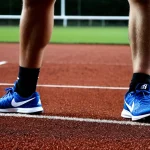UK Sports Policies: Foundations and Aims
Understanding UK sports policies is essential to grasp how athletics are developed from grassroots to elite levels. These policies provide a structured framework, emphasizing equal access, talent nurturing, and sustainable sports participation. The government sports strategy aims to create an environment where everyone, regardless of background, can engage in sport.
The primary goals of these policies include promoting physical health, fostering community cohesion, and enhancing international success. Central to policymaking is creating pathways that link local initiatives with national ambitions, effectively bridging grassroots and elite sport.
Also to discover : What role do UK sports play in promoting cultural diversity?
National strategies steer regional and local sports programs by setting broad objectives and allocating resources accordingly. For example, policies advocate for inclusive participation, ensuring underrepresented groups gain access to sports opportunities. This has a ripple effect, influencing local clubs, schools, and development centers, helping them align with overarching targets.
In summary, sports development in the UK is a carefully coordinated effort, driven by policies designed to balance mass participation with high-performance ambitions. They provide clarity on priorities, ensure efficient use of resources, and build solid foundations for long-term athlete progression.
In parallel : How Are UK Athletes Preparing for the Upcoming Sport Season?
Government Initiatives and Funding Structures
Government support plays a pivotal role in shaping sports funding within the UK. Agencies like Sport England and UK Sport are central to allocating financial resources that sustain athlete pathways from amateur to elite levels. Sport England primarily focuses on grassroots and community sport development, encouraging participation and improving local facilities. In contrast, UK Sport channels funds towards high-performance efforts, backing Olympic and international success.
Government sports strategy ensures that funding is distributed transparently and strategically, enabling well-defined athlete development programs. This structured investment supports coaching, talent identification, and state-of-the-art training environments. For example, financial backing enables the creation and maintenance of sports academies, which nurture emerging talent in line with national priorities.
Increased sports funding has demonstrable impacts, such as the expansion of participation rates and upgrades to sports infrastructure across regions. This financial support also contributes to diversifying access, addressing barriers that certain groups face in engaging with sports. Overall, governmental support and targeted sports funding effectively drive the dual aims of mass participation and elite athlete success, balancing community benefits with competitive outcomes.
Athlete Development Pathways and Talent Identification
Talent identification is central to UK sports policies, forming a cornerstone of effective athlete development pathways. These pathways provide structured progress routes from grassroots levels to elite performance, integrating policy aims with practical athlete support. Sports academies, a key policy-driven facility, serve as hubs where emerging talents receive specialized coaching, medical support, and education alongside training.
Athlete development pathways are designed to be inclusive, allowing progression based on ability rather than background. This ensures a diverse pool of athletes benefits from high-quality resources. Identification programs often involve systematic scouting in schools and clubs, coupled with scientific performance analysis to recognize potential early.
Policies encourage collaboration between community programs and elite training centers, facilitating smooth transitions. For example, talent identification initiatives work closely with academies to fast-track promising athletes, aligning local engagement with national ambitions. This integration helps nurture individuals holistically, addressing physical, technical, and psychological factors.
Such frameworks also emphasize ongoing monitoring and personalized development plans, ensuring athletes are supported throughout their careers. Ultimately, athlete development pathways and talent identification reflect the government’s commitment to sustaining competitive success while promoting widespread participation in sport.
Regulatory Standards and Safeguarding in Athlete Development
Ensuring the safeguarding of athletes is a fundamental component of UK sports policies. National regulations mandate strict welfare standards designed to protect athletes from physical, emotional, and psychological harm. These policy regulations apply uniformly across grassroots clubs and elite training centers, emphasizing duty of care and athlete rights.
How are safeguarding protocols applied in practice? They include comprehensive background checks for coaches and staff, clear codes of conduct, and formal reporting procedures for abuse or misconduct. This framework ensures swift responses to concerns and maintains a safe environment for all participants.
Implementation often involves mandatory training on safeguarding awareness and child protection, embedded within club and national programs. These policies work alongside athlete welfare standards, covering not only safety but also mental health support and injury prevention strategies.
By fostering a culture of transparency and accountability, policy regulation enhances trust between athletes, coaches, and governing bodies. This trust is crucial for sustainable sports development, enabling athletes to focus on their progress without fear.
Stronger safeguarding results in inclusive, secure environments that uphold the dignity and well-being of every athlete, reflecting the government sports strategy’s commitment to holistic support.
Outcomes and Measurable Impacts on Athlete Progression
Understanding how athlete success is evaluated helps clarify the effectiveness of UK sports policies. Performance outcomes serve as key indicators, often measured through competition results, progression through athlete development pathways, and retention rates in sport. For example, consistent advancement from community programs to elite levels signals strong policy-guided support.
Program evaluation typically incorporates quantitative data such as participation numbers and qualitative feedback from athletes and coaches. This dual approach ensures that policies not only foster peak performance but also encourage sustained engagement.
Case studies highlight these impacts clearly. Athletes who have progressed through structured talent identification and sports academies demonstrate the tangible benefits of coordinated sports development. Their journeys often reflect personalized support aligned with government sports strategy objectives, from initial scouting to elite competition readiness.
Moreover, monitoring long-term outcomes addresses issues beyond immediate success, including athlete well-being and career longevity. This focus ensures that policies promote holistic development rather than short-term achievements alone.
Ultimately, measurable impacts validate the strategic direction of UK sports policies, informing continuous refinement and targeted investment to sustain competitive excellence and widespread participation alike.
Challenges and Ongoing Policy Debates
UK sports policies face several policy challenges that affect their implementation and impact. A key concern is funding limitations, which can constrain the breadth of sports development initiatives despite overall government support. Limited resources sometimes hamper equal access to quality facilities, coaching, and athlete support, especially in lower-income regions.
Another significant challenge involves inclusivity in sport. Even with policies aimed at broad participation, disparities persist among gender, ethnicity, disability, and socio-economic groups. Addressing these gaps remains a central theme in ongoing policy debates, as inclusivity is vital for sustainable sports development and reflects the core aims of government sports strategy.
Regional disparities challenge national cohesion in sports initiatives. Urban areas often receive more robust funding and infrastructure, while rural or deprived regions may lag behind. This uneven distribution of resources questions how effectively UK sports policies reach all athletes.
To mitigate these challenges, experts advocate for more targeted funding, enhanced community engagement, and continuous monitoring of equity outcomes. Strengthening collaboration between local bodies and national agencies can improve resource allocation to underserved groups. Thus, while UK sports policies set clear goals, their success depends on addressing practical challenges in funding, inclusivity, and regional balance.
Expert Perspectives and Future Directions
Experts across coaching, administration, and policy consistently emphasize the need for adaptability in UK sports policies. As the sporting landscape evolves, expert insights highlight challenges such as shifting participation patterns and technological advancements requiring updated approaches. Policy recommendations often call for increased collaboration between governing bodies, enhanced data-driven decision-making, and stronger community engagement to ensure sustainable sports development.
Future-oriented strategies prioritize addressing funding limitations by proposing diversified revenue streams alongside traditional governmental support. Experts also stress inclusion as a pivotal area, urging policies to embed equity more deeply, tackling systemic barriers faced by underrepresented groups within athlete development frameworks.
Emerging trends include integrating digital tools for talent identification and monitoring, which offer real-time analytics to fine-tune training and performance assessment. Such innovations align with the government sports strategy by improving efficiency and individualizing athlete pathways.
Overall, these forward-looking perspectives advocate for policies that are dynamic and responsive, blending scientific advances with grassroots realities. Embracing this approach ensures that UK sports maintain competitive excellence while promoting broad participation, addressing both immediate needs and long-term growth potentials.





